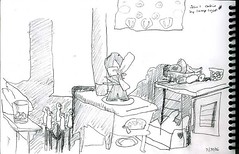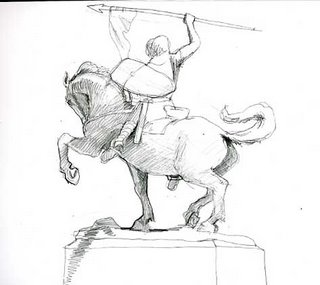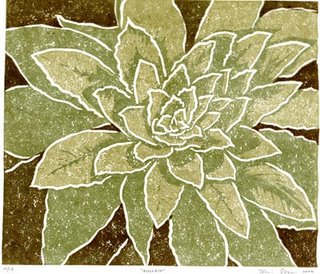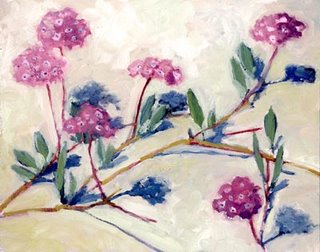
I read this essay on visual literacy by April Gornik the other day. I've been thinking about it alot, particularly since I'm trying to articulate for myself why I find reproductions of paintings so distasteful. Don't get me wrong, I understand that the reasons people create reproductions and perhaps why they buy them has to do with the economics of buying and selling art. My discomfort with reproductions is more philosophical than practical.
What April Gornik articulates in her essay is that the physicality of a piece is as important as the image, and she points out that many people don't have the visual literacy to distinguish between "something that had been made by hand and something that had been made by a machine". In a world in which most images are reduced to the flat presentation of a computer or TV screen, the connection between the physical nature of a work and its impact is lost.
As any person who has visited a museum knows, seeing a reproduction of a painting in a book or on line is not the same experience as seeing it in person. For one, there is a completely different sense of scale. On line, all pictures are reduced to the size of your computer screen. You can't relate to either the grandeur or preciousness of an object on line. And there is the other aspect of seeing works in person that has to do with the connection made between the artist and the viewer. I vividly remember walking through the Uffizi Gallery in Florence as a teenager and marveling that all these objects I had seen in books were real, that they actually existed. As April Gornik says, "The real power of the visual arts in their capacity as virtual reality is the physicality of the experience, the somatic connection that remains between the work of art, the artist who made it, and the person looking at it. That connection is an essential part of the human experience, a verification of humanity, history, and our connectedness itself."
I guess my unease with reproductions has to do with a desire on my part for authenticity of experience. A reproduction is just the shell of the art. It's all image and no substance. What I find so engaging about painting plein air is the reality of the experience. Sure, I do some editing and rearranging of the image when I paint, but the painting is a more authentic record of my experience of a location than a photograph can ever be. So why try to reproduce that?















